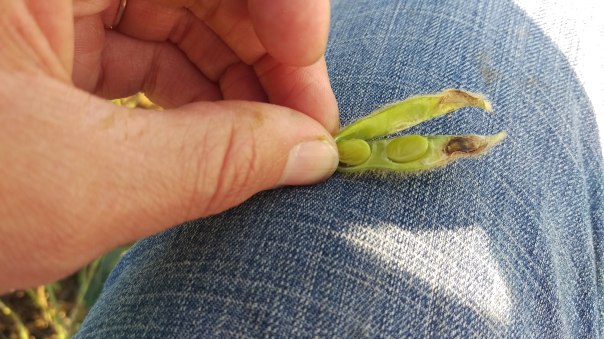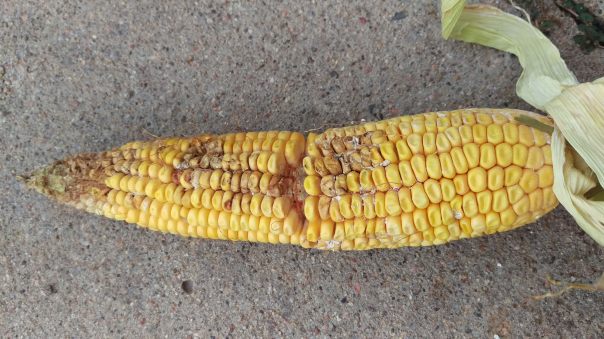Aug. 23: Midwest Corn Production Clinic, ENREC near Mead, Reg: 8 a.m., Program 8:30-5 p.m.
Aug. 23: West Central Water & Crops Field Day, West Central Research & Extension Center North Platte, 8 a.m.
Aug. 23: Soil Health Pit Tour (rescheduled from Aug. 14) 2:00 at Bill Neilson farm, C and 33 Rd (8 miles south and 1¼ east of Minden) then Kell Rutt’s at 3:00, 14 miles south of Minden or 14 miles north of Franklin to HWY 4 and HWY 10 junction ¼ south on the east side of the road. Questions: jody.saathoff@
Aug. 23: Soil Health Demo Farm Field Day, 9-Noon (8:30 Registration), Loren Pestel Farm 57161 834 Rd. Stanton, RSVP: (402) 439-2213
Aug. 23: York Co. Corn Grower Plot Tailgate, 5-7 p.m.
Aug. 24: Animals Make Us Human-by Dr. Temple Grandin, 10 a.m., Buffalo County Fairgrounds, No charge, free will donation, for youth, adults, public.
Aug. 24-Sept. 3: Nebraska State Fair, Grand Island
Hail Damage Info: Thank you to all who attended our hail damage meetings last Monday and we truly hope the information was helpful. It was a lot of information at one time, so I have compiled it at: https://jenreesources.com/2018/08/14/late-season-hail-damage-resources/.
The ‘blessing’ in the timing of these later-season storms is in the reduced kernel moisture and shorter length of time till harvest. This is important to reduce the time for fungal growth in the ears. If you missed the meeting, presentations and information are at the link above. The main key I will stress: Please, ask your crop insurance agent how he/she wants to handle grain quality at harvest. Does the agent want to take samples for mold/potential mycotoxin? Does the agent go off of COOP samples? Does the agent require samples prior to going in the bin? These are key questions as we do know there is fungal growth on damaged ears. The presence of fungal growth does not automatically mean the presence of a mycotoxin. However, if grain quality isn’t handled and documented correctly at harvest, it can mean the loss of compensation if grain goes out of quality in storage. If anyone is taking hail damaged corn for silage, Dr. Mary Drewnoski is interested in samples prior to and after ensiling and is willing to help with sample analysis cost. Even if silage has already occurred, we’d be interested in samples after ensiling. Please contact me if interested. I will share additional considerations next week, but please check out the weblink above (or if it’s easier just go to http://jenreesources.com). Please let me know if you have any questions!

One week after the August 6, 2018 hail storm, stalk rot is setting in where stones hit the stems. This is regardless if fungicide was sprayed on fields at some point this season.

Soybean plants vary in damage. Many pods have moldy seeds where hail affected them or where they are no longer able to fill. We don’t tend to worry about molds in soybean and our experience has been these become light-weight and blow out the back of the combine at harvest.

Seven days after the August 6, 2018 storm, fungal growth and mold is present on ears, but pretty much only the places where hail stones hit the kernels. Corn was at late dough to early dent at the time of this storm. The growth is minimal compared to what I’ve seen on ears when damaged earlier than this when more moisture was present in kernels. Fusarium which is fluffy and white/pink in color, is what I’m seeing mostly on the specific hail stone or any insect damage on ears (I took this pic after the ears were passed around at the meetings, so the fungi don’t show up well). Fusarium has the potential to create the mycotoxins vomitoxin or fumonisin-but the presence of Fusarium (or related fungus Gibberella) does not automatically mean the presence of a mycotoxin. Diplodia (white growth see at top of photo near base of ear) is showing up more now with the additional moisture events. Diplodia does not have a mycotoxin associated with it. However, it will greatly explode on an ear creating light-weight ears and kernels and can be a problem in grain storage. It is what caused the most problem in the 2013 and 2014 hail storms. It also creates problems in tight-husked ears that remain upright and moisture gets into the base of them.
York County Corn Grower Plot Tailgate will be held from 5-7 p.m. on August 23rd. The plot is located east of York on Road 14 between Roads O and P on the north side of the road. View hybrids and visit with company representatives. Also, provide your estimate of the highest yield of the plot without going over. The winner will be awarded a Yeti cooler at the York County Corn Grower banquet in November. Pizza and beverages will be provided. Hope to see you there!
South Central Ag Lab Field Day will be held Wednesday, Aug. 29 from 8:55 a.m. to 4 p.m. at 851 HWY 6 near Harvard, NE. The day will begin with registration at 8:30 a.m., followed by tours of research sites through 4 p.m. Keynote speaker for the lunch is Mike Boehm, University of Nebraska-Lincoln Harlan Vice Chancellor for the Institute of Agriculture and Natural Resources and University of Nebraska vice president. Participants will be able to choose from four of the following six tours during the day. View program brochure for schedule.
Topics include the latest research in: Cover crops to corn issues; Corn insect management; Comparisons of variable rate irrigation and fertigation to fixed rate and impacts of cover crops on soil quality; Nitrogen fertilizer management (inhibitors and sensors) in irrigated corn; Corn and soybean disease updates; and Opportunities and challenges for weed control in soybean. CCA credits have been applied for. To register, please go to: https://go.unl.edu/2018scalfieldday by Aug. 26 for lunch planning purposes. Directions: 13 miles east of Hastings on Hwy 6 or 4.5 miles west of the intersection of Hwy 14 and Hwy 6. north of Clay Center.
Hamilton County Corn Grower Plot Tour will be held August 29th beginning at 11 a.m. The field location is just west of M Road and Hwy 34 on the south side (4 miles west of the Hwy 34 and 14 junction in Aurora), just past the viaduct. The program will feature Tom Hoegemeyer talking about the history of corn and how plant breeders have improved the yields. Kelly Brunkhorst, Executive Director of the Nebraska Corn Board will round out the program with an update on trade, the farm bill, and tariffs. Lunch starts at noon at the Oswald Farm followed by the featured speakers. The farm is located from L Road and Hwy 34 (5 miles west of the Hwy 34 and 14 junction in Aurora), 1 mile south to 12th Rd., then 1/2 mile west on the south side of the road.
Irrigation Field Days: Field days on Aug. 27 and 28 will demonstrate soil water measuring tools in production fields designed to help growers feel confident with their irrigation scheduling decisions. The demonstrations will show several irrigation scheduling equipment systems that were installed in the field this summer and have been recording data. Field Days will be located:
- August 27 – near Broken Bow. The August 27 presentation will be part of the Custer County Corn Growers 2018 Field Day at the Jeremy Coleman farm near Broken Bow. The tour will start at 5:30 p.m. at the field site, located five miles west of the intersection of Hwy 2 and Callaway Road then south ¾ mile on 433 Road. A meal will be served about 6:30 p.m. at Coleman’s shop one mile east of the field on Road 798. The educational program will be presented during the meal.
- August 28 – near Bradshaw. The August 28 tour will start at 12 p.m. with field demonstrations of the irrigation scheduling equipment, followed by a meal and presentations in the farm shop. The Bruce Hudson farm is at 2405 Road G, Bradshaw. That is 3.5 miles east of Polk on Hwy 66 to Rd G and 2 .7 miles south or from Benedict (Hwy 81 & State Spur 93C) 6 miles west to Rd G and 2.25 miles north.


































